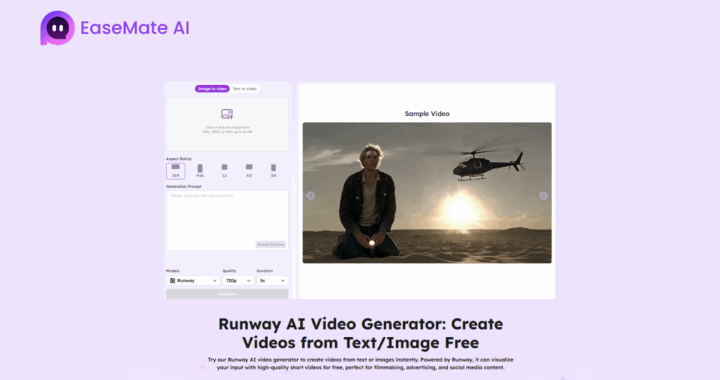Revolutionizing Corporate Events: The Hottest Tech Trends of 2025

Corporate gatherings in 2025 are poised for a dynamic transformation, with new technologies streamlining logistics, boosting engagement, and enriching the attendee experience. By leveraging advanced solutions such as Virtual Reality simulations, 360 photobooths, holographic displays, AI-driven tools, and wearable devices, event planners can captivate audiences while enhancing operational efficiency.
360 Photobooths
Among the most captivating event additions for 2025, 360 photo booths allow participants to capture full-circle images or videos, creating immersive, shareable memories that generate organic event promotion.. These booths transform a simple snapshot into a cinematic experience.
What It Is
A 360 photobooth typically comprises a rotating camera rig or platform that circles participants, capturing them from every angle. Integrated with photo booth software, these booths generate a 360-degree video or image sequence that can be enhanced with slow motion, filters, music overlays, or other interactive elements.
This multifaceted approach to event photography provides a new dimension for attendee engagement and marketing, offering both a unique experience for guests and a powerful branding tool for hosts.
How It Could Be Used During Corporate Events
Brand Amplification and Interactive Fun
By featuring company logos or event-related backdrops in the 360 capture, organizations subtly incorporate brand messaging into attendee photos. The booth itself can become a conversation piece and a social-media magnet, encouraging guests to mingle and share the unique footage with colleagues and friends.
Attendee Engagement
Participants are drawn to novel, photogenic experiences, making 360 photobooths a hub of excitement. This attraction cultivates a lively environment, sparks conversation, and promotes increased on-site interaction.
Creative Giveaways and Contests
When used as part of a larger promotional strategy, 360 photo booth can facilitate contests or giveaways. Attendees might share their 360 videos using a designated hashtag, fostering broader online visibility and an appealing sense of competition.
Benefits and Considerations
Enhanced Visibility
The virality of 360 videos or GIFs can substantially boost event marketing. Each clip becomes a micro-promotion, extending the event’s reach far beyond the physical venue.
High Demand and Resource Requirements
These booths often attract long lines, meaning event staff and crowd flow must be carefully managed. Equipment can require routine maintenance, and a dedicated support team is essential to ensure smooth operation.
Immersive Virtual Reality (VR) Experiences
Virtual Reality (VR) offers attendees a fully immersive digital landscape that simulates real-world scenarios or entirely novel environments. As headsets and specialized software continue to improve, VR solutions have become more feasible for large-scale professional events, transforming the way companies showcase products and foster team-building.
According to Grand View Research, the VR market may achieve an annual growth rate of 27.5% through 2028 111, solidifying its status as a cornerstone of next-generation event planning.
What It Is
VR is a computer-generated three-dimensional simulation that attendees can explore and interact with, typically through head-mounted devices equipped with sensors and displays. The high fidelity of modern VR headsets allows for lifelike immersion, letting participants move and look around within a digital realm. This realism significantly enhances engagement, making VR one of the most sought-after tools for future-forward corporate events. It’s also an incredibly effective way to conduct virtual reality safety training, allowing employees to practice handling hazardous situations in a controlled, risk-free environment.
How It Could Be Used During Corporate Events
Interactive Product Demonstrations
One compelling application of VR lies in product demonstrations. Instead of transporting bulky goods or prototypes, companies can present interactive simulations of their offerings, allowing attendees to examine features, manipulate components, and gain deeper insight into how solutions might operate in real-life settings.
Gamified Team-Building Activities
Another important use case for VR is in team-building sessions. Employees can be placed in virtual collaborative challenges that require communication, problem-solving, and teamwork to succeed. Such immersive gamification fosters camaraderie and rapport, leading to stronger professional relationships.
Virtual Tours and Remote Attendance
When certain participants cannot physically attend, VR can replicate the event environment and provide a virtual venue. Attendees can navigate virtual booths, watch keynote presentations, or network with other participants from anywhere in the world.
Benefits and Considerations
Immersive, Memorable Experience
Because VR engages multiple senses, the user experience is more memorable than traditional formats. This heightened interactivity can also translate into stronger brand recall for event sponsors.
Scalability and Customization
A VR setup can scale up or down, depending on factors like attendee volume and budgetary constraints. The digital nature of VR allows for easy customization, ensuring the environment aligns closely with the event’s branding and theme.
Holographic Presentations
Holograms have evolved from science fiction novelties to practical display solutions that dazzle audiences with life-sized three-dimensional visuals. Their growing popularity stems from the ability to blend physical and digital elements in a format that breaks from conventional projectors and screens.
What It Is
Holographic displays function by projecting light onto a transparent medium or screen to create the illusion of floating, 3D images that change perspective as viewers shift position. These illusions can be as small as tabletop displays or large enough to showcase life-sized human figures, product models, or dynamic graphical data. Research from MarketsandMarkets estimates that the global holography market could reach about USD 5.5 billion by 2026 222, indicating strong momentum for this technology in various sectors, including corporate events.
How It Could Be Used During Corporate Events
Dynamic Keynotes and Presentations
Companies can utilize holographic technology to broadcast speakers who are not physically present at the venue. Executives or thought leaders can appear as striking, full-body holograms, captivating audiences without requiring substantial travel or scheduling complexities.

Live Product Deconstructions
Holograms excel at visualizing complex ideas, such as product parts and internal mechanisms. Presenters can rotate or dissect a holographic model on stage, providing an unparalleled level of clarity for attendees.
Investor Engagement and Stakeholder Briefings
When sharing forecasts, prototypes, or design concepts, holographic displays provide a more intuitive, eye-catching means of explanation. Stakeholders are more likely to remain attentive and retain critical information when it is presented through a 3D visualization.
Benefits and Considerations
Elevated Engagement and Memorability
Audiences are naturally drawn to holographic visuals due to their innovative, futuristic feel. This helps events stand out, making the content more memorable and increasing the likelihood that key insights will resonate long afterwards.
Versatility with Remote Appearances
Speakers who cannot attend in person can still appear as realistic 3D projections. Although this simplifies travel logistics, it necessitates a stable internet connection and proper synchronization.
AI-Driven Event Management
Artificial Intelligence (AI) is reshaping how event organizers handle registration, scheduling, and attendee engagement. By using machine learning algorithms and predictive analytics, planners can optimize the entire event lifecycle while crafting a more personalized experience for participants.
What It Is
AI-driven event management involves deploying intelligent software solutions that automate or enhance various logistical tasks. From managing ticket sales and verifying identities to analyzing real-time attendee movement, AI-based platforms deliver data-backed insights that help planners adjust on the fly. Chatbots, facial recognition, and natural language processing are also increasingly common tools in the AI event ecosystem.
How It Could Be Used During Corporate Events
Smart Attendee Registration and Customer Support
AI-powered registration solutions automate attendee check-in, verifying tickets through facial recognition or QR scanning to expedite entry. Chatbots can handle frequently asked questions, freeing staff to tackle more complex tasks.
Personalized Networking Recommendations
Machine learning algorithms evaluate attendee profiles to recommend relevant contacts or sessions based on interests and professional backgrounds. This feature increases networking outcomes and attendee satisfaction.
Real-Time Monitoring and Data Analytics
AI platforms track foot traffic and session popularity, delivering comprehensive analytics. Organizers can then respond by reallocating resources, adjusting event schedules, or offering targeted messaging to improve the attendee journey.
Benefits and Considerations
Increased Efficiency and Resource Allocation
By automating repetitive tasks, AI frees human teams to focus on creative and strategic pursuits. Predictive analytics optimize staffing and resource distribution, reducing time and monetary expenditures. For businesses seeking to navigate these complexities, our legal team can provide guidance on compliance regulations such as GDPR and CCPA, ensuring that data privacy is maintained while leveraging AI solutions. Integration with existing systems can be intricate, requiring adequate technical expertise and robust security measures.
Data Privacy and Technical Barriers
Because AI solutions gather and store significant amounts of personal data, event planners must stay mindful of compliance regulations such as GDPR and CCPA. Integration with existing systems can be intricate, requiring adequate technical expertise and robust security measures.
Wearable Technology
Wearables such as smart badges, bracelets, and augmented reality headsets present seamless solutions that can enrich both attendee engagement and event operations. These devices wirelessly connect to broader event platforms, offering functionalities that range from contactless access to sophisticated health monitoring.
What It Is
Wearable technology refers to electronic devices worn on the body. In corporate event contexts, common wearables include NFC (Near Field Communication) wristbands for entry management, AR glasses for immersive presentations, and sensor-laden badges capable of measuring foot traffic patterns. By synchronizing with event software, these gadgets can instantly transmit and receive valuable data.
How It Could Be Used During Corporate Events
Contactless Check-In and Secure Access
Wearable devices eliminate the need for paper tickets or manual scanning, streamlining the arrival process and heightening security. This approach simplifies managing VIP lounges, restricted breakout sessions, or other exclusive areas.

Location-Based Notifications
When integrated with beacon technology, wearables can alert attendees about ongoing demonstrations, schedule changes, or networking opportunities based on their current location within the venue.
Benefits and Considerations
Real-Time Insights and Personalization
Wearables present immediate data about attendee behaviors and engagement, enabling organizers to tailor experiences and intervene promptly if crowd flow requires redirection.
Data Security and Privacy
Collecting data from wearable devices underscores the importance of secure data storage and compliance with privacy laws. Participants should be informed about what data is collected and how it will be used.
Conclusion
From panoramic 360 photobooths to fully immersive VR simulations and AI-empowered analytics, corporate events in 2025 are laden with innovations that promise to redefine how businesses engage, educate, and inspire.
As technology continues to evolve, business owners and planners who strategically incorporate these solutions will undoubtedly stand out in a landscape increasingly defined by innovation and meaningful audience engagement.

 Should Bangladesh Regulate Online Gambling? Pros and Cons
Should Bangladesh Regulate Online Gambling? Pros and Cons  Runway AI Video Generator Free: How EaseMate AI Makes It Simple for Everyone
Runway AI Video Generator Free: How EaseMate AI Makes It Simple for Everyone  How Can Gasteromaradical Disease Be Treated? Discover Effective Relief Strategies Now
How Can Gasteromaradical Disease Be Treated? Discover Effective Relief Strategies Now